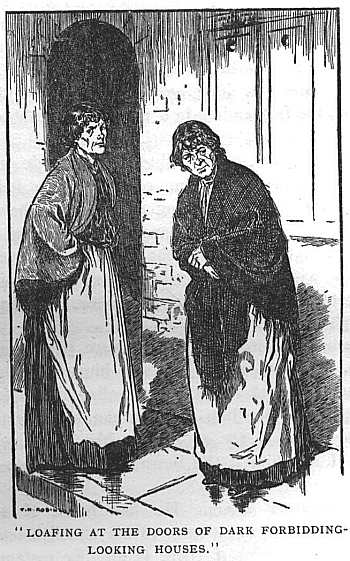|
The East End of London
The East End of London, in Jacob and Elizabeth's day,
was an area of small, closely-packed overcrowded houses
tenanted by large working-class families, who would have
usually have been crammed into two rooms. Many of these
families were immigrants from war-torn Europe: many of
them had arrived via the docks and stayed in the area,
like the Chinese immigrant community in Limehouse and
the enormous number of refugees from the Irish potato
famine. Wages were low and living conditions were
appalling for a lot of people. Disease was common, with
everyone living so close together and not getting enough
to eat. Children were lucky to survive their first
birthday; men had a very low life expectancy because
working conditions were terrible; death during
childbirth was very common.
Having said all this, Elizabeth managed to spend her
whole life in the East End and raise nine out of twelve
children to adulthood, survive the deaths of two
husbands, and live to see her eightieth birthday. So,
we come from pretty tough stock.
Here are some general links
about life in the East End during Jacob and Elizabeth's married
years:
Hunger in the East End - an interesting Victorian account of how poor people lived.

Tower Hamlets History Online
- a terrific site full of contemporary Victorian articles on the area,
with pictures. My favourite is the one above, which is entitled
"Slatternly women loafing at the doors of dark, forbidding-looking
houses in Whitechapel." That's my ancestors! and they probably look
grim because they're wondering why some snooty gent is staring at
them...
Stepney Online - a resource for people with Stepney ancestors, with a lot of good articles and historical information
Limehouse - an interesting history of the area
Jack the Ripper (who was haunting
Whitechapel in the late 1800s) - good site by the Met police
St George's in the East - two articles about Germans in St George-in-the-East, including stuff on sugar bakers - mentions German musicians.
The East End was very heavily bombed during the Second World War,
and many of its residents lost their homes. Most of the old East End
communities were destroyed during the 1950s, when the area was
redeveloped and families rehoused, many of them in Essex. 'Slum
clearances', and the subsequent regeneration of the Docklands area
have completely changed the East End, and many of the streets our
ancestors lived on no longer exist.
If you would like to read more about all this, I can recommend the following books:
My East End by Gilda O'Neill - contains a lot of interesting history, plus many personal accounts by former East Enders and their children
East End Chronicles by Ed Glinert - another fascinating history, with some particularly good parts on the dock workers
|

